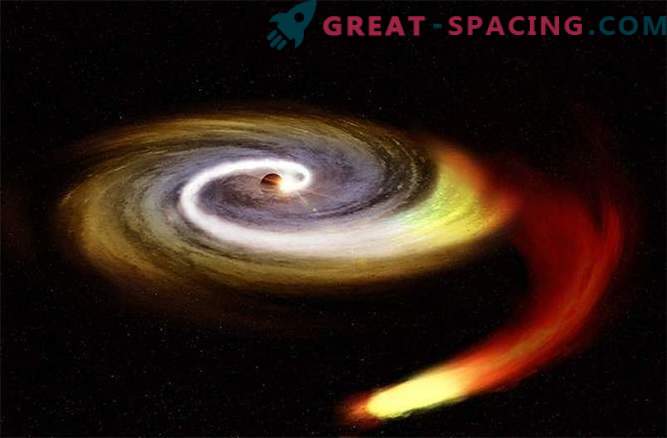
The super heavy black hole at the center of our galaxy began to stir, and astronomers wondered if there was a surge in activity due to the passage of a mysterious star enveloped in dust.
Until recently, the supermassive black stars of the Milky Way (located in the center of our galaxy called Sagittarius A *) generated bright flashes approximately every ten days. However, over the past year, activity has increased, and Sagittarius A * flashes approximately every 24 hours.
Using data from three space telescopes, astronomers have become able to better understand the nature of these flares and may have established astounding cosmic relationships.
According to Gabriele Ponti, an employee of the Max Planck Institute for Extraterrestrial Physics in Germany, scientists have been tracking X-rays from the Black Hole Strelets A * for several years. Initially, there was an assumption that this radiation has no effect on the hole, but the new data obtained show that everything could be different.
In order to collect a complete picture of Sagittarius A * activity as scientists approach the dust cloud, scientists have accumulated data from NASA Chandra Observatory, XMM-Newton X-ray telescope, created by the European Space Agency, as well as data obtained from NASA satellite Swift. As you know, in 2011, astronomers discovered an object called G2, which was supposed to collide with a black hole and, possibly, was absorbed by it, after it fell into its gravity funnel. In the event that this happens, astronomers expect to see a powerful flash, which would give mankind an understanding of the nature of the high energy processes that occur on the horizon of a black hole event and during the formation of an accretion disk. Alas, when G2 approached in 2014, nothing happened. At least nothing obvious.
Before approaching, scientists assumed that G2 is a cloud of dust and gas. Perhaps these were stellar remnants, slowly moving through the galactic core. But after his encounter with the black hole, G2 began to expand around the black hole, and then returned to orbit in interstellar space. It was then that the essence of G2 manifested itself - perhaps it was a star enveloped in dust. His attraction maintained the form, and only a part of the cloud was able to come off and was absorbed by the black hole.
Although everyone assumed that the black hole “feasts” G2, the latter managed to escape.
No doubt, gravitational disturbances affected the star and its cloud, but there is no evidence of flare activity, which means that G2 managed to escape intact.
The new study, which will be published in the Monthly Notices of the Royal Astronomical Society, suggests that the activity of Sagittarius A * is a sign that G2 dust has indeed fallen into a black hole, causing daily X-ray emissions.
According to Mark Morris (Mark Morris) from the University of California at Los Angeles, at the moment there is no consensus what the G2 is. Immutable remains only the fact that Sagittarius A * became more active soon after the passage of G2. Perhaps the reason for this was matter torn from G2. Naturally, correlation does not necessarily mean a cause. There may be other explanations for the increase in flare activity, if this increase exists at all.
Perhaps the stellar wind did supply Sagittarius A * with matter, and this caused an increase in activity. Or, perhaps, we learned better how to determine X-rays, and daily activity only reflected this in the data. But the possibility that G2 is a cause is too exciting, since in this case, humanity would have been given the opportunity for the first time to look at the causes and the effect of absorption, as well as the behavior of the black hole.
According to Barbara De Marco from the Max Planck Institute, it’s too early to say something for sure, but in the coming months X-ray eyes will be directed to Sagittarius A *. Perhaps new research will clarify whether G2 is responsible for changing the nature of a black hole, or is it part of its behavior.











































